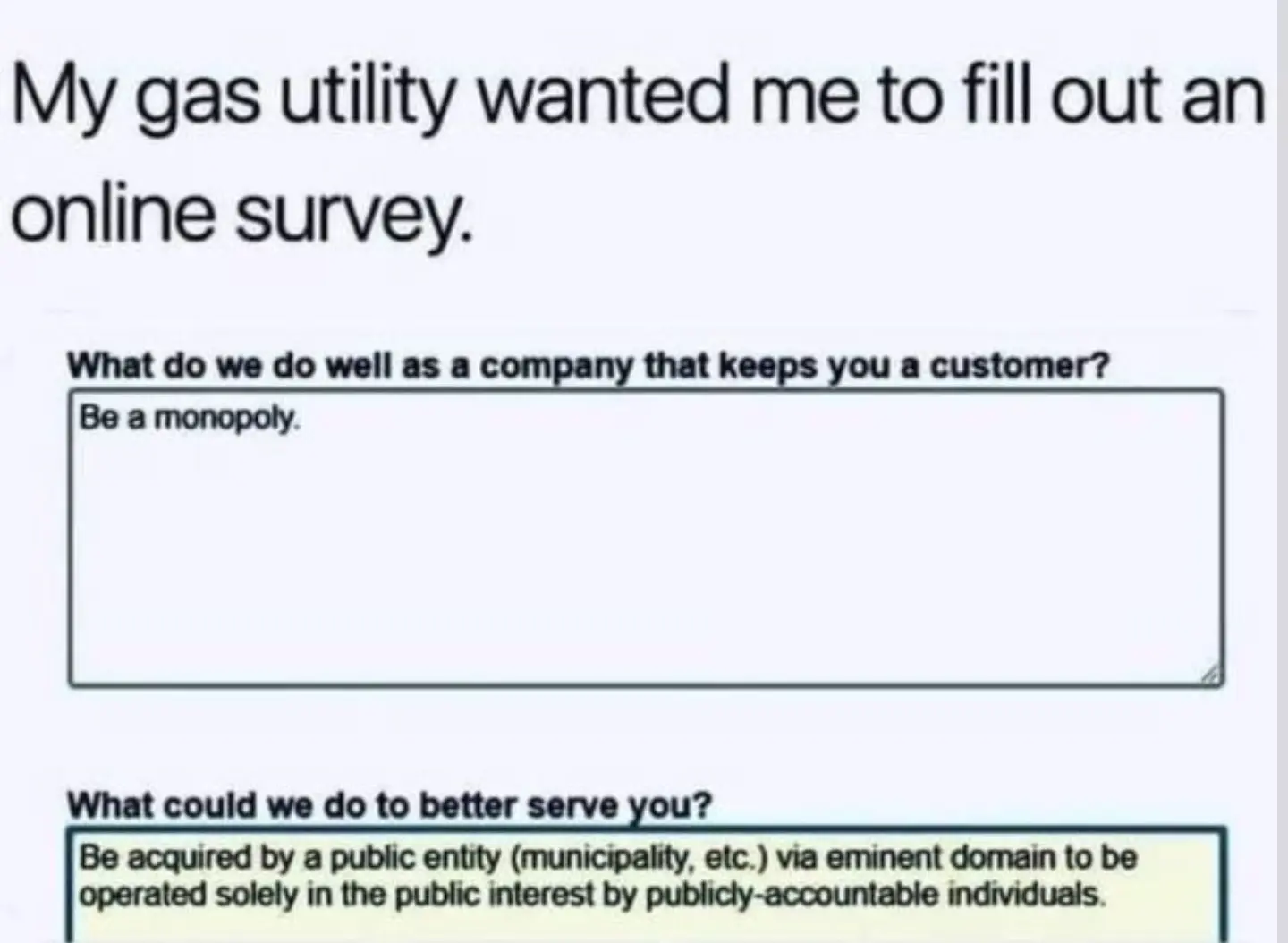this post was submitted on 10 Apr 2024
1844 points (98.6% liked)
solarpunk memes
2932 readers
789 users here now
For when you need a laugh!
The definition of a "meme" here is intentionally pretty loose. Images, screenshots, and the like are welcome!
But, keep it lighthearted and/or within our server's ideals.
Posts and comments that are hateful, trolling, inciting, and/or overly negative will be removed at the moderators' discretion.
Please follow all slrpnk.net rules and community guidelines
Have fun!
founded 2 years ago
MODERATORS
you are viewing a single comment's thread
view the rest of the comments
view the rest of the comments

You're choosing from vendors to deal with the regional vendor. You're just paying someone to pay the company in your area. The company you pay in this scenario literally offers you zero value. They simply exist to extract money from you.
Alternatively, these services could be provided to you at a lower cost as part of your annual tax bill under a collaborative cooperative.
That's not how it works.
The price you pay has 2 main components: a fixed component for network costs. This part is always the same and only depends on the type of hookup you have (e.g. an industrial power connection would cost more than a residential one). It goes to the owner of the physical power network (this depends on where you live) who uses it for things like maintenance (and of course a little profit). The network operator does not provide power themselves.
The variable component is based on your usage and goes to the power company. The power companies provide the actual power to the national grid. While it may be true that the power coming out of my outlets wasn't produced by the company I'm contracted with, that doesn't really matter. Electricity is electricity. What matters is that each power company has to provide the amount of energy used by their customers to the national grid. Say company A has 100 customers that on average used 1 kilowatt-hour each, and company B has 50 customers that used the same amount on average. Then company A has to provide 100 kilowatt-hours to the national grid and company B has to provide 50 kilowatt-hours.
How they provide that power is up to them, and usually varies. The larger energy companies have their own power plants, wind and solar farms. Smaller companies may buy energy in bulk from the larger ones and try to sell it at a profit to consumers. Energy companies may also buy or sell to/from other countries, depending on capacity and demand.
Point is that they don't just forward you the bill from a local company, they actually have to provide the power and outside of a few small 'virtual' energy companies they do produce that power.